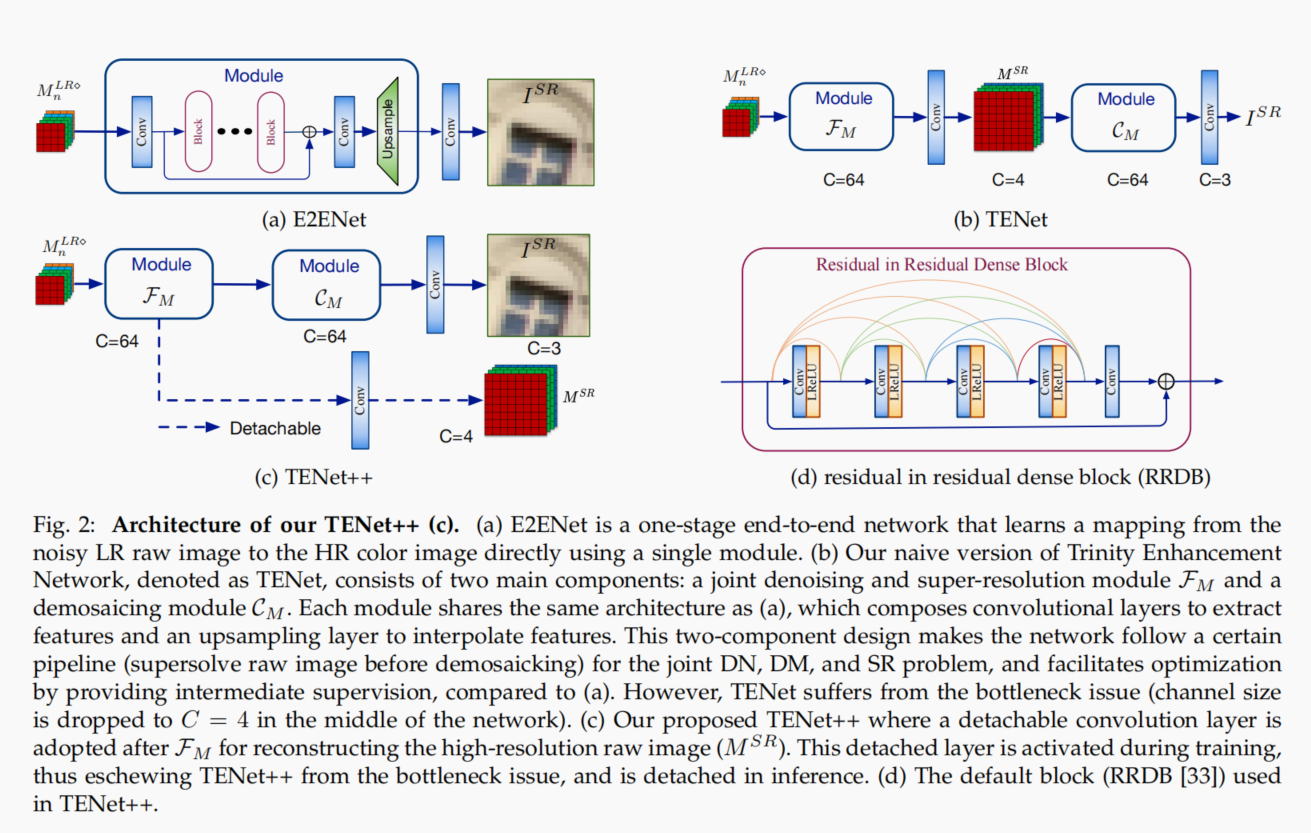Rethinking Learning-based Demosaicing, Denoising, and Super-Resolution Pipeline
Guocheng Qian, Yuanhao Wang, Jinjin Gu, Chao Dong, Wolfgang Heidrich1 , Bernard Ghanem1 , Jimmy S. Ren

Imaging is usually a mixture problem of incomplete color sampling, noise degradation, and limited resolution. This mixture problem is typically solved by a sequential solution that applies demosaicing (DM), denoising (DN), and super-resolution (SR) sequentially in a fixed and predefined pipeline (execution order of tasks), DM→DN→SR. The most recent work on image processing focuses on developing more sophisticated architectures to achieve higher image quality. Little attention has been paid to the design of the pipeline, and it is still not clear how significant the pipeline is to image quality. In this work, we comprehensively study the effects of pipelines on the mixture problem of learning-based DN, DM, and SR, in both sequential and joint solutions. On the one hand, in sequential solutions, we find that the pipeline has a non-trivial effect on the resulted image quality. Our suggested pipeline DN→SR→DM yields consistently better performance than other sequential pipelines in various experimental settings and benchmarks. On the other hand, in joint solutions, we propose an end-to-end Trinity Pixel Enhancement NETwork (TENet) that achieves the state-of-the-art performance for the mixture problem. We further present a novel and simple method that can integrate a certain pipeline into a given end-to-end network by providing intermediate supervision using a detachable head. Extensive experiments show that an end-to-end network with the proposed pipeline can attain only a consistent but insignificant improvement.